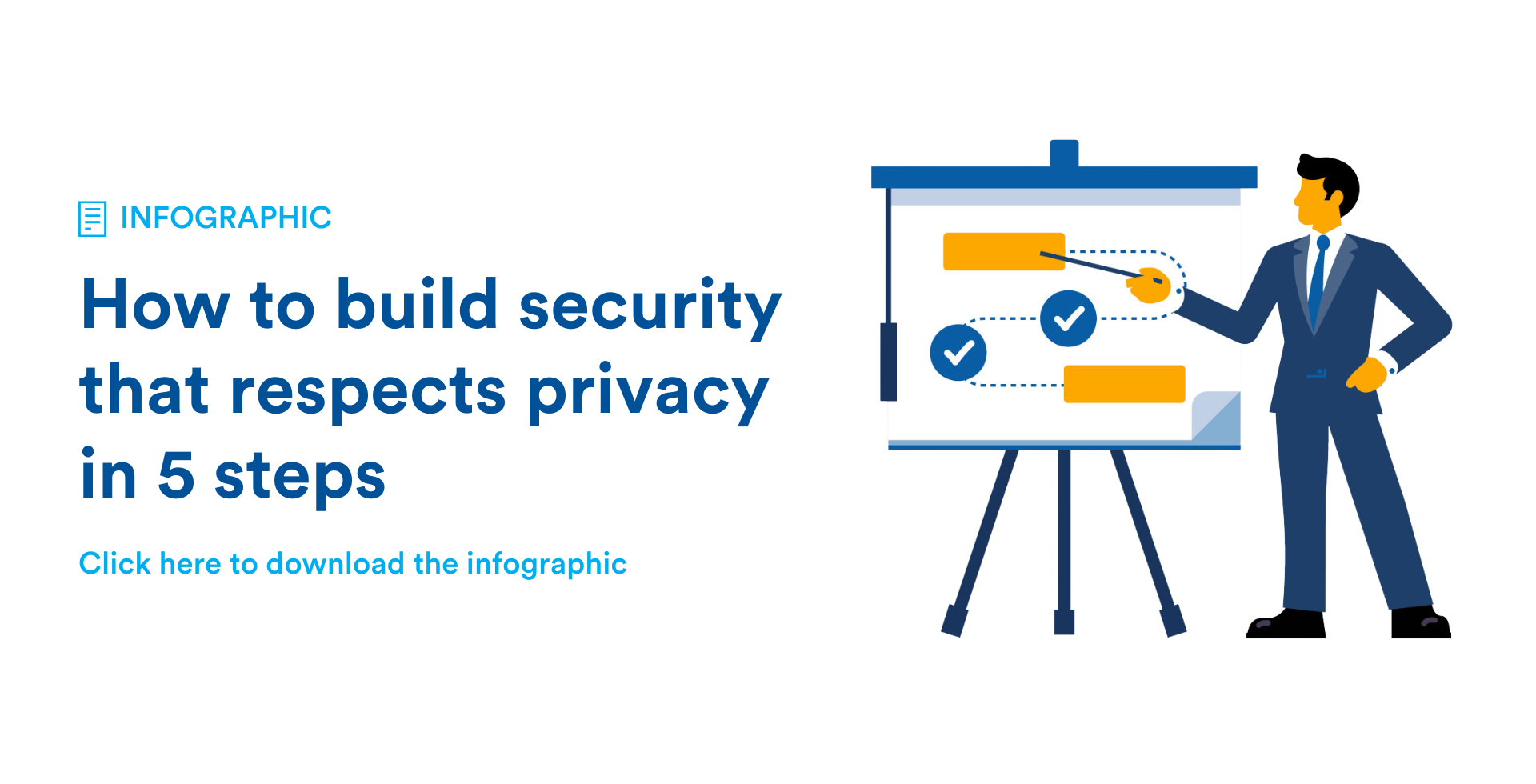Building an effective data protection and privacy strategy
Want to build an effective data protection and privacy strategy but not sure where to begin? Keep reading for a full breakdown.

Securing your organization requires you to collect and monitor large amounts of information. From the video camera feeds of your property to the access control systems that store cardholder information, there’s a lot of physical security data to keep secure.
By 2024, the share of the global population to be covered under privacy regulations is projected to reach 75%—the forecast for the year 2023 was 65%—and in 2020, only 10% of the global population's privacy was protected by modern laws.
Wondering if you’re doing enough to keep your physical security data secure? Check out the infographic below to learn about five key steps for comprehensive privacy protection.
Read the step-by-step approach to data privacy
Privacy protection in 2024
What you once believed to be a comprehensive privacy protection strategy might not cut it anymore. Cybercrimes are at an all-time high, and threat actors are becoming far savvier with their attack methods.
People, whether employees, customers, or the public, also want to know how their personal information is collected, stored, and used. Because of this, new privacy legislation is coming into effect all over the world to hold organizations more accountable.
Organizations today can’t just set and forget their hardening tools and privacy defenses. Keeping up with evolving threats and ensuring privacy compliance requires you to adjust protection methods as new vulnerabilities and laws emerge.
For all of these reasons, there’s never been a better time to review your privacy protection strategy. Fortunately, there’s a lot you can do to make sure your data and physical security solutions are fully protected.
Getting started with a data privacy protection strategy
Establishing a strong data protection strategy is a proactive way to keep your valuable information safe. To begin this process, you need to conduct a thorough analysis to identify areas for improvement in how you handle data. You can do so by evaluating your current systems to make sure they address privacy concerns effectively without using too many resources.
Once you have insights from the analysis, you can focus on implementing new processes. This includes documenting clear privacy policies and procedures to create a solid foundation for managing privacy across your organization. Educate your employees on cybersecurity and best practices to create a culture that prioritizes privacy.
Transparency is crucial in a comprehensive data protection strategy. Enhance it by openly communicating with the public about your ongoing data and privacy initiatives. This not only builds trust but also shows your commitment to keeping information secure. Taking these steps ensures your organization remains resilient and adaptable to face evolving threats and privacy standards.
BLOG
Set up your system with privacy in mind
To prioritize privacy in your system setup, you’ll need to incorporate a few key elements. This includes putting in place multiple layers of defense for personal information protection within your physical security system.
You can do so by clearly defining user access, restricting logins, and controlling sensitive data access. Make sure to add privacy features, like video anonymization, for identity protection. To comply with data storage regulations, consider automating data retention policies so they get deleted in a timely manner when needed.
If you’re often sharing data with colleagues or external agencies, consider investing in a digital evidence management system for secure information sharing during investigations or requests. These steps collectively strengthen your system against privacy breaches, ensuring a comprehensive approach to data protection.
Choose a partner you can trust for the long run
Of all the steps you can take, one of the most important is choosing trusted vendors that are committed to privacy, cybersecurity, and transparency. Not only does this give you access to a host of built-in defenses and privacy-minded features, but it also ensures you have a partner that you can rely on and trust as risks and regulations change.
BLOG
The right vendor can help you oversee your privacy strategies and do a gap analysis to identify improvements. You can also enable data protection and privacy features within your systems or implement an entirely new physical security solution built with Privacy by Design.

